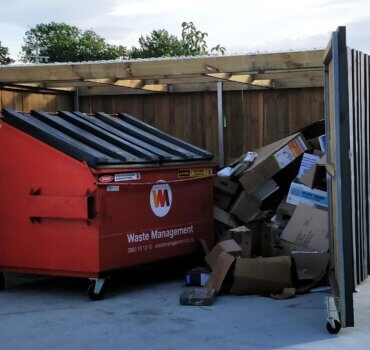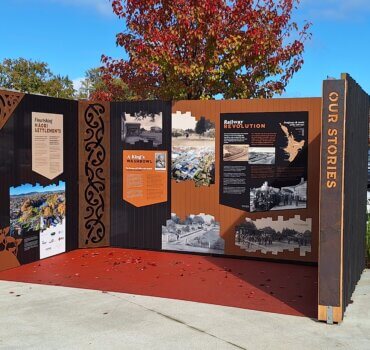A set of heritage panels revealing the backstory to Cambridge’s Lakewood development are delighting both locals and visitors.
Finishing touches to the panels went in last month, brought to this point by a group keen to tell the story of the area before its transformation into a modern multi-faceted development.
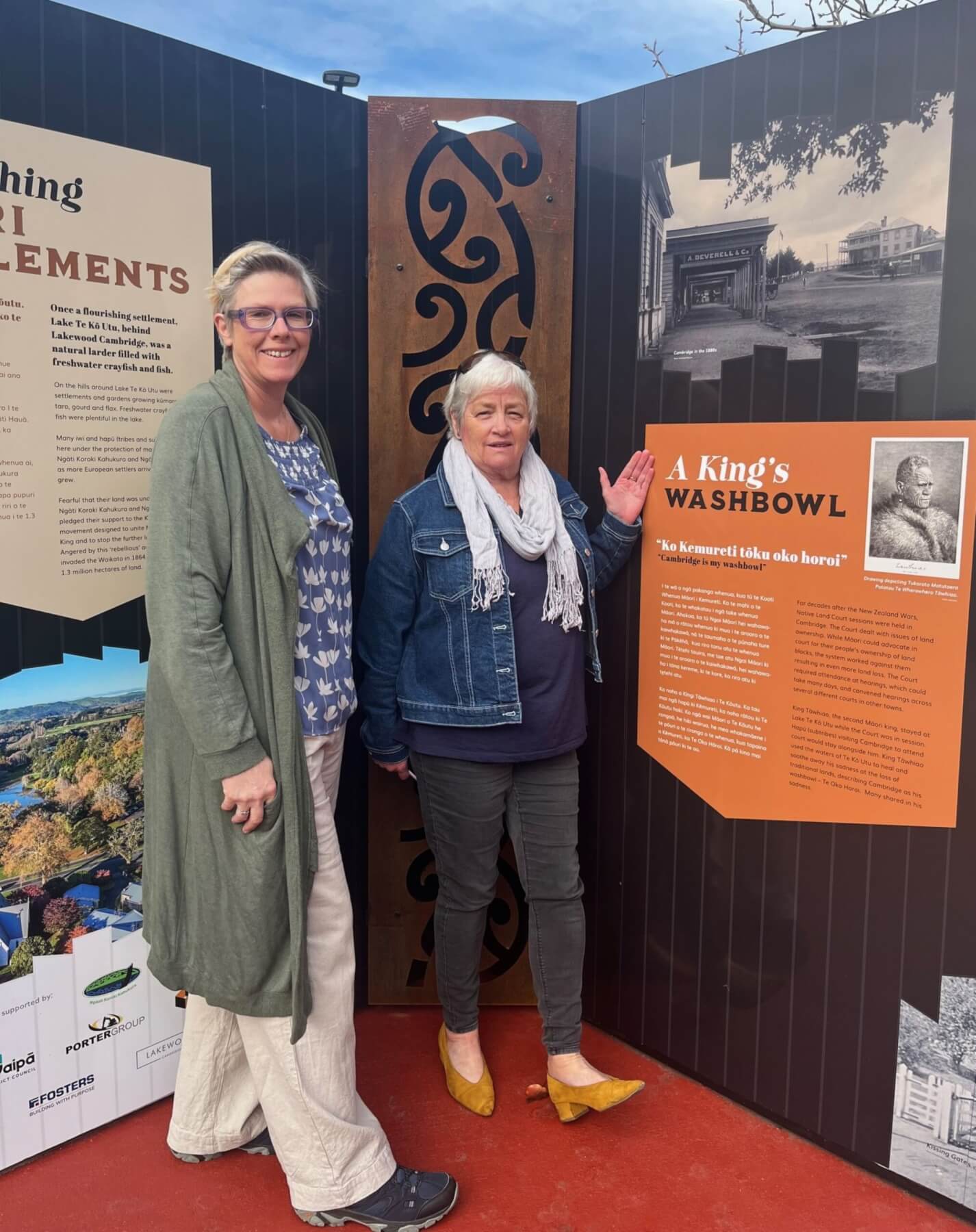
Cambridge Museum manager Elizabeth Harvey, left, with the project’s instigator Mary Anne Gill, point out the bi-lingual aspect of the heritage panels. Photo: Viv Posselt
Lakewood today – stage one opened in 2018 – comprises a five-star hotel, apartments, 24-hour gym and numerous dining and retail options.
Long before that, however, the area was historically relevant to both local iwi and European settlers. It is those stories that piqued the interest of former Lakewood Body Corporate chair, Mary Anne Gill and gave her the vision to turn what was a rubbish compound into an area that acknowledged its Māori and European past.
Gill was Lakewood Body Corporate chair from 2018 to the end of March this year.
- Before…… a rubbish compound
- After … heritage panels
“When stage two at Lakewood was completed in early 2020, which included Hidden Lake Hotel, developers built a rubbish compound in the middle of what is now the carpark,” she explained.
“I felt it was the wrong place for a compound. It was where the Cambridge Railway Station and line finished, so it seemed to me to be a waste of an historic space. The doors broke off a couple of times when the rubbish truck manoeuvred in to collect the rubbish, recycling and oil waste … it looked awful.”
Finding herself in-step with co-committee member Carol Townshend, the committee decided to close it as a rubbish compound and take on the historical panels project. They secured funding from the developers, Foster’s and Porter Group, and Waipā District Council’s Heritage Fund.
They also approached Cambridge Museum manager Elizabeth Harvey who helped pull the project together with Sonia Frimmel from What’s the Story, a company specialising in bringing local heritage to life by creating displays such as information boards and historical panels.
Harvey said sharing local histories at Lakewood was a way of reaching people who may not typically visit museums or marae.
“Collaborating with Hinerangi Kara from the Ngāti Koroki Kahukura Trust to narrate these histories, and with Sonia Frimmel to present them so beautifully, has been fulfilling.”
The stories that needed to be told at Lakewood linked to its vibrant past, Gill added. They are told in both English and te reo.
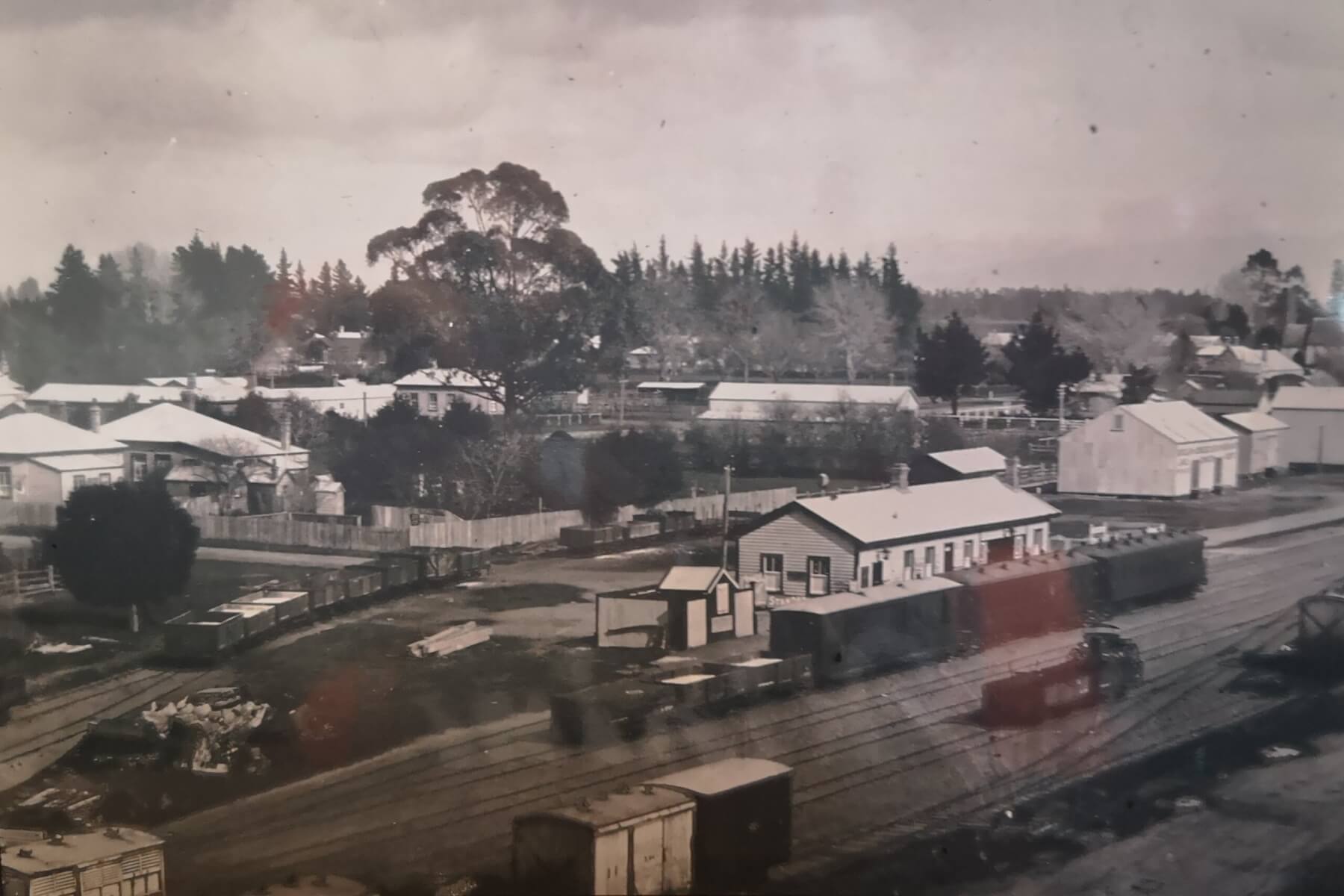
Early Cambridge Railway Station. Photo: Cambridge Museum
For iwi it was a flourishing meeting place. Lake Te Koo Utu was a pataka kai (food pantry) for local Māori and visiting tribes. There was flax for weaving and bulrush for thatching. Horotiu Pā is now the Cambridge CBD where Māori lived peacefully until the Land Wars of 1863-64 when British soldiers invaded.
King Tawhiao, the second Māori King, gave the lake the name Te Koo Utu, meaning ‘to scoop up water’. He spent a lot of time in Cambridge when Land Court hearings took place at what is now the Cambridge Museum.
Later history saw the area linked to a railway line that was central to the town’s progress. Museum records show that the Cambridge Railway line terminated at the site from 1884 to 1999, with the ‘kissing gates’ and railway sign the only reminders of that era.
“As part of the resource consent, the developers had previously rehoused the Cambridge Railway sign and ‘kissing gates’ at the Lake Street entrance, but there was no explanation about them,” Gill said.
“Many people have no idea there was a railway station and railway line here. So many young people left from the station to go to World War One and never returned. And the town’s development once the track was laid owes so much to the railway line’s existence. It provided a valuable rail route for the district’s produce.
“What is at Lakewood now where the railway station was is so much better than a rubbish compound. Now the ‘kissing gates’ and Cambridge sign make more sense to visitors.”
Hidden Lake Hotel and Apartments managing director Glenda Hamilton said many guests and staff enjoyed reading the boards, with several relaying their appreciation of them to the reception desk.
“Some mentioned that they got quite emotional reading it,” she said. “The feedback has been really positive. It is an excellent use of that space.”
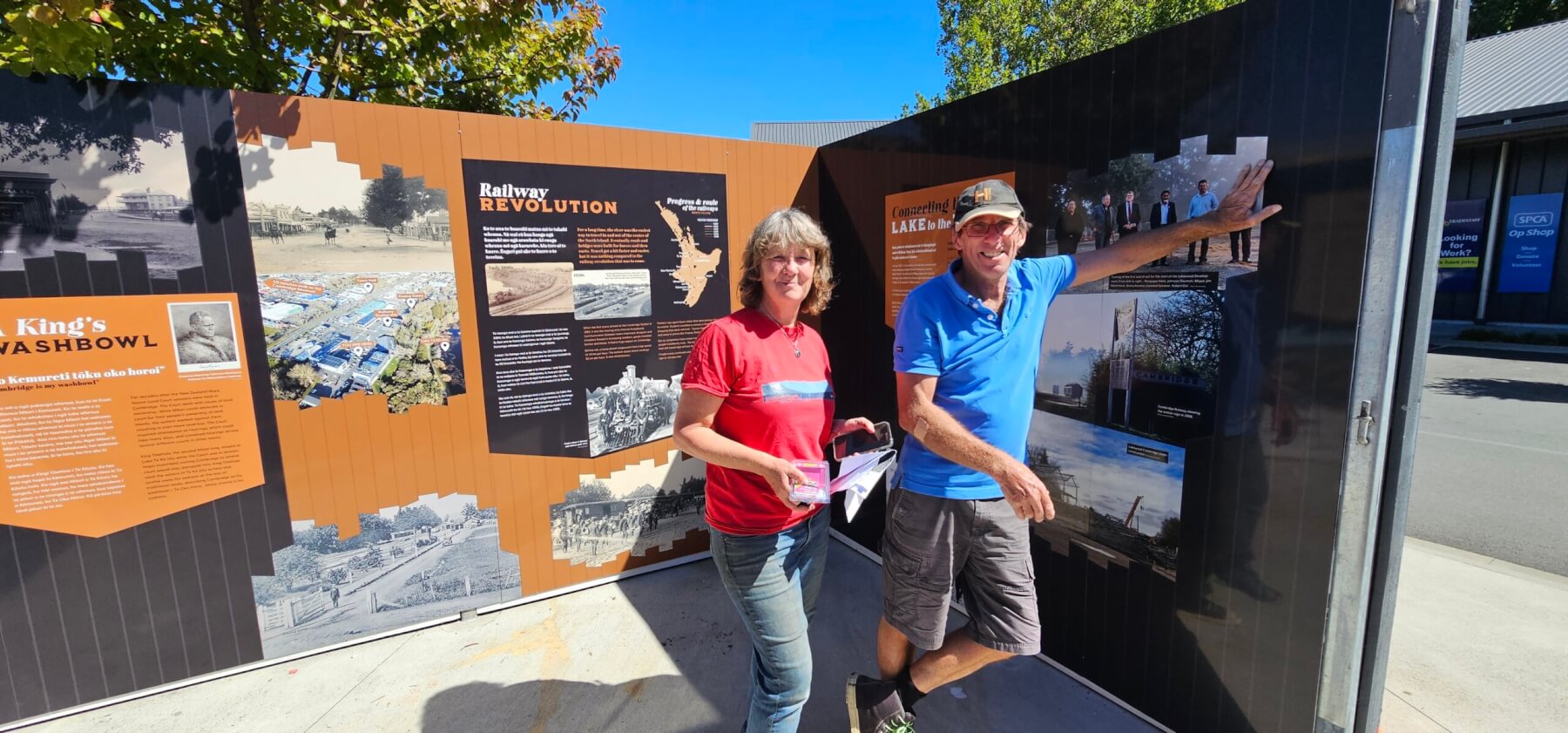
What’s the Story’s Sonia Frimmel and carpenter Ken Atkinson in front of the new Lakewood heritage panels. Photo: Supplied.



